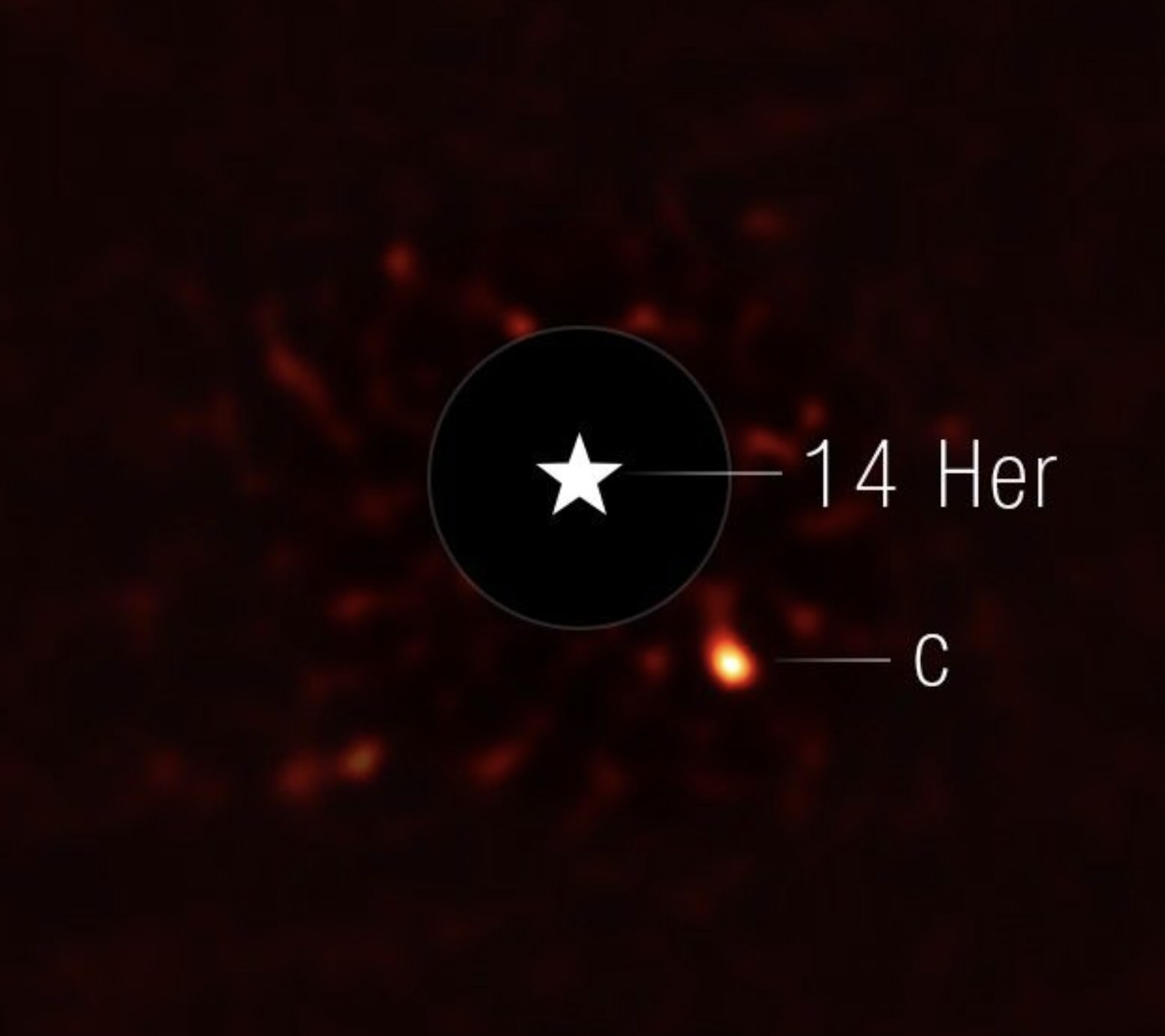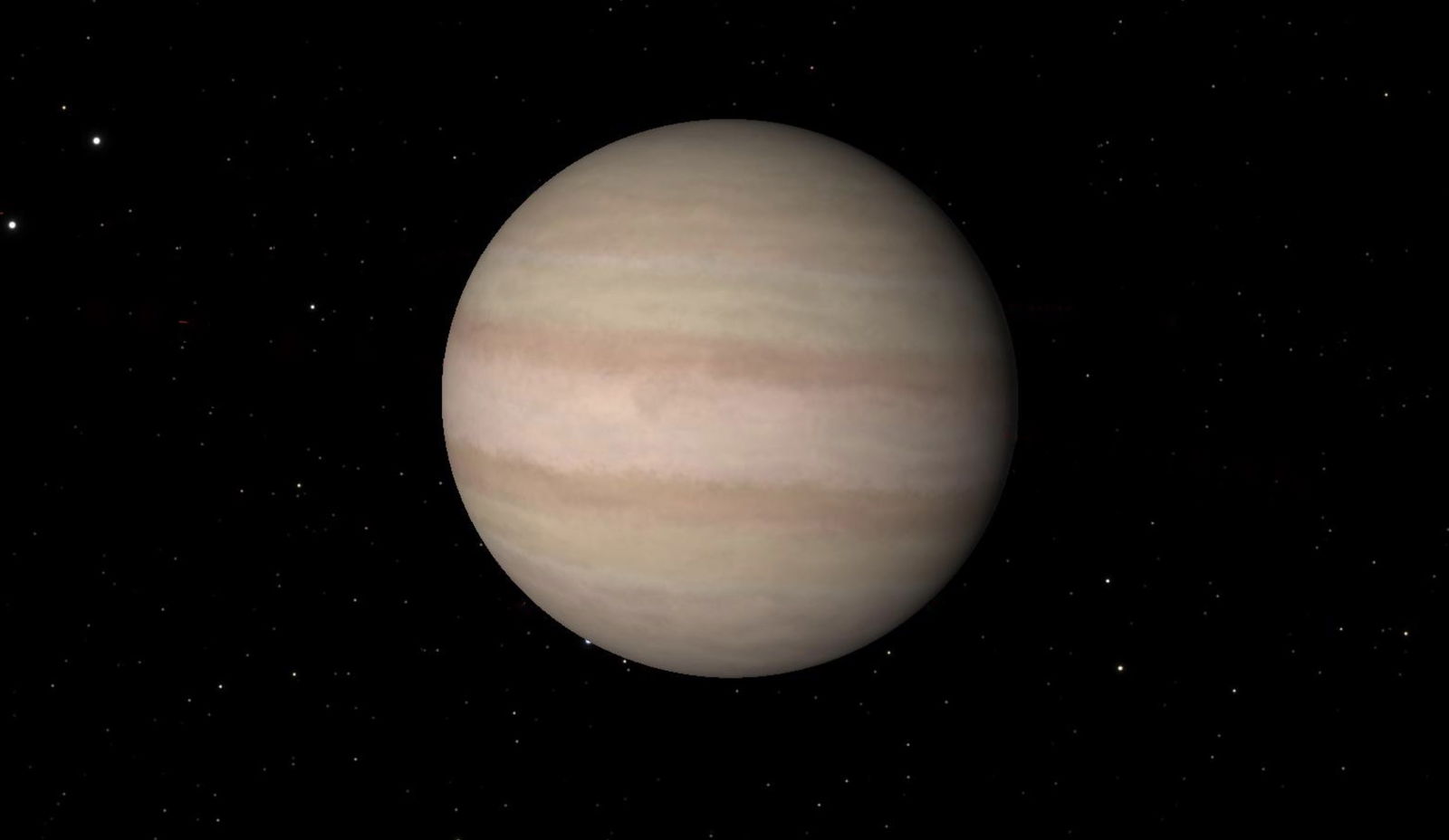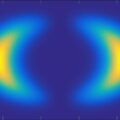Astronomers have observed a planetary system 60 light-years from Earth that has been characterized as “abnormal, chaotic, and strange” with the help of NASA’s James Webb Space Telescope (JWST).
The JWST’s sensitive Near-Infrared Camera, or NIRCam, imaged one of two planets known to encircle the star 14 Herculis, which is located in a distant part of the Milky Way Galaxy.
One of the most frigid ever observed, the newly spotted exoplanet stands out among the thousands currently known to astronomers, most of which are extremely hot by comparison. Dubbed 14 Herculis c, the frozen world is estimated to be close to 7 times the weight of Jupiter.
A Frozen World
William Balmer, a graduate student at Johns Hopkins University and co-first author on a new paper describing the discovery, says that colder exoplanets are among the hardest to spot in astronomical imagery, adding that “this is a totally new regime of study that Webb has unlocked with its extreme sensitivity in the infrared.”
“We are now able to add to the catalog of not just hot, young exoplanets imaged, but older exoplanets that are far colder than we’ve directly seen before Webb,” Balmer adds.
The new Webb data reveal that the planetary system in which 14 Herculis c resides is unusual compared to most others, although it possesses a Sun-like central star. However, the two planets in this unique system don’t orbit the host star as planets in our solar system do, instead crossing in an “X” formation with their star at the center, each tugging and pulling at the other as they pass through their orbit.
 James Webb Space Telescope image of 14 Herculis c (Credit: NASA, ESA, CSA, STScI, W. Balmer (JHU), D. Bardalez Gagliuffi (Amherst College)).
James Webb Space Telescope image of 14 Herculis c (Credit: NASA, ESA, CSA, STScI, W. Balmer (JHU), D. Bardalez Gagliuffi (Amherst College)).
The peculiar misalignment is the first known to have been captured in images by astronomers. A range of theories have been proposed to account for how this planetary system is so bizarre in appearance. One possibility is that a third planet might have once cohabited with the two existing exoplanets, but somehow became ejected early in the system’s formation.
Investigating “A Planetary Crime Scene”
“The early evolution of our own solar system was dominated by the movement and pull of our own gas giants,” Balmer said in a recent statement, adding that asteroids were often ejected as such colossal forces rearranged the orientation of planets.
“Here, we are seeing the aftermath of a more violent planetary crime scene,” Balmer said. “It reminds us that something similar could have happened to our own solar system, and that the outcomes for small planets like Earth are often dictated by much larger forces.”
Fortunately, the new data supplied by JWST offers new insights into the peculiar exoplanet’s temperature, atmosphere, and orbit. It is located 1.4 billion miles from its host star in an extremely elongated elliptical orbit, which is close to 15 times the distance between Earth and the Sun.
Additional data obtained by the JWST’s coronagraph instrument helped determine the planet’s brightness, which measures at around 4.4 microns. This, in turn, points to unique activities occurring in 14 Herculis c’s atmosphere.
Daniella C. Bardalez Gagliuffi, the new paper’s co-first author, says that this indicates the planet likely cooled over the roughly 4 billion years since it formed, since there isn’t any nearby energy source to warm it. Because of this, astronomers can also predict what its temperature would likely be today.
“Added information, like the perceived brightness in direct imaging, would in theory support this estimate of the planet’s temperature,” Gagliuffi said in a statement.
A Planetary System with Unusual Properties
Still, 14 Herculis c has some additional peculiarities, including why the planet’s brightness is fainter than what astronomers would expect for an object of its age and overall mass. One possibility for this apparent discrepancy may involve carbon disequilibrium chemistry, a phenomenon mostly observed in stars like brown dwarfs.
Gagliuffi says that given the frigid temperature of 14 Herculis c, it compares best to past observations of brown dwarf stars.
“In those objects, like with 14 Herculis c, we see carbon dioxide and carbon monoxide existing at temperatures where we should see methane,” Gagliuffi said.
“This is explained by churning in the atmosphere,” Gagliuffi adds. “Molecules made at warmer temperatures in the lower atmosphere are brought to the cold, upper atmosphere very quickly.”
Going forward, the team hopes that further investigations into the unusual aspects of this strange planetary system will be revealed through future spectroscopic studies, along with other data that can be obtained with the help of JWST’s advanced instrumentation.
The team’s new paper has been accepted for publication in The Astrophysical Journal Letters and was recently presented at the 246th meeting of the American Astronomical Society in Anchorage, Alaska.
Micah Hanks is the Editor-in-Chief and Co-Founder of The Debrief. He can be reached by email at micah@thedebrief.org. Follow his work at micahhanks.com and on X: @MicahHanks.

